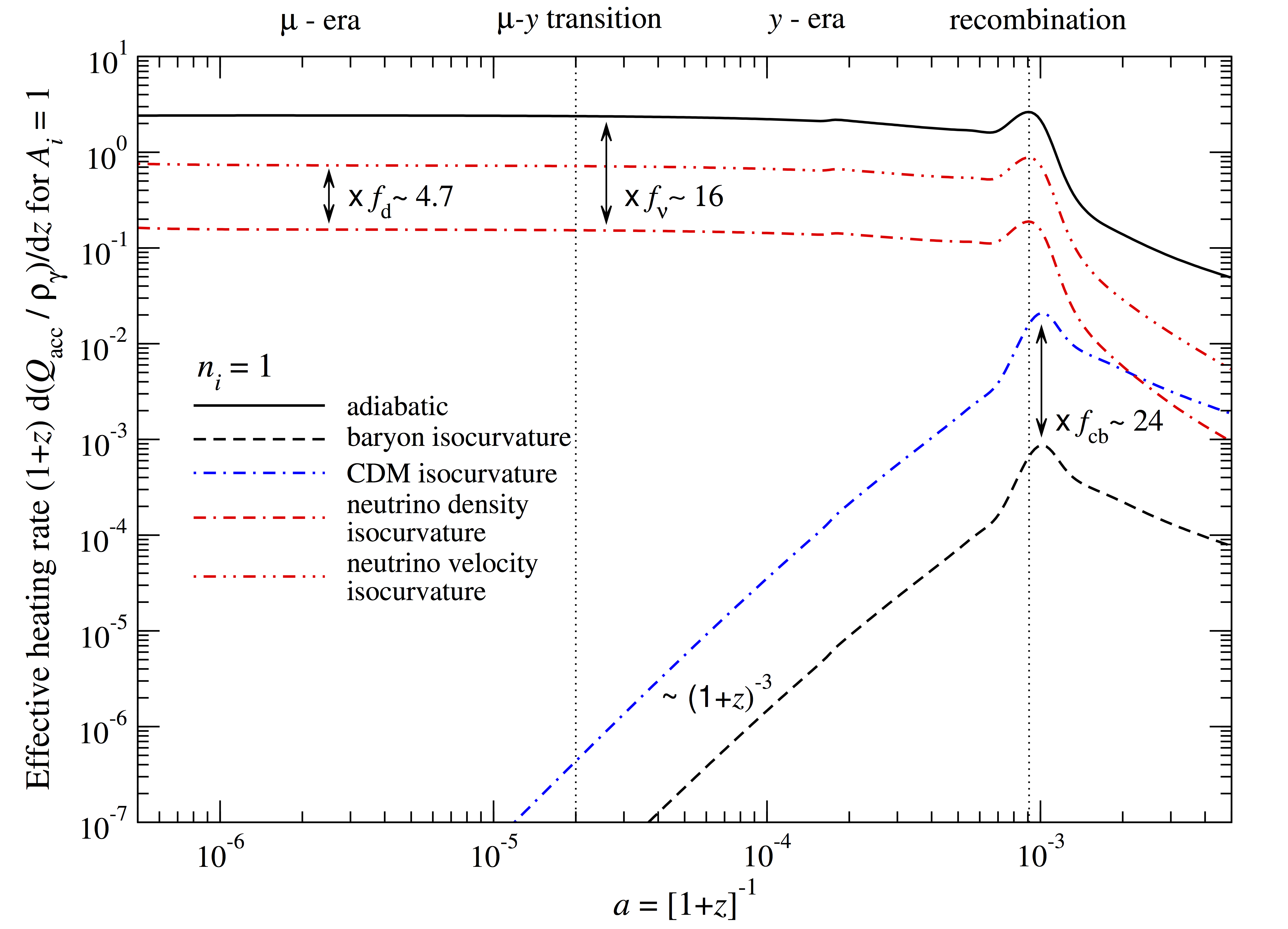Spectral distortions from isocurvature perturbations
Isocurvature perturbations are fluctuations in the relative number densities of particles at constant total density. Like adiabatic (or total density) fluctuations, primordial isocurvature perturbations will excite acoustic waves in the baryon-photon plasma. Jens Chluba and I computed the spectral distortions (deviations of the spatially averaged CMB from a perfect blackbody) generated when these acoustic waves damp due to diffusion. We showed that neutrino density isocurvature modes with a scale-invariant spectrum could be probed 10 times more sensitively with the proposed distortion experiment PIXIE, while cold-dark matter isocurvature modes with a blue power spectrum (with spectral index ~3) could probed with similar sensitivity.
Results published in arXiv:1304.4596 (MNRAS, 434, 1619)
In collaboration with Jens Chluba.

Schematic of the proposed PIXIE satellite
A schematic of the PIXIE satellite concept (a proposed NASA explorer mission) is shown below, along with an illustration of the shape of the various types of CMB spectral distortions. 

Jens Chluba: spectral distorter extraordinaire!
Unlike CMB anisotropies, the CMB frequency spectrum, after being confirmed to being a blackbody at precision, has received scant experimental attention. There are, however, guaranteed signatures, produced by the damping of adiabatic perturbations and adiabatic cooling of electrons, beginning at redshift
for chemical potential type (or
) distortions and continuing until
. These have no known astrophysical source. Any novel heating process (novel perturbations, dark matter annihilation or decay) in this redshift window could be probed using a measurement of CMB spectral distortions. At lower redshift (
), a Compton y-type (or Sunyaev-Zeldovich) distortion is produced.
-type distortions could also be produced during reionization or by clusters in the nearby universe (interesting subjects in their own right), and are thus a less robust probe of primordial cosmology.
To determine the effect of isocurvature perturbations on CMB spectral distortions, we derived isocurvature initial conditions in conformal Newtonian gauge and generated the resulting spectral-distortion generating heating rate using the CosmoTherm code. Shown above is the dimensionless heating rate as a function of redshift for adiabatic and various isocurvature modes, assuming a scale-invariant spectrum. We can see that isocurvature in a relativistic species (neutrinos) is more efficient at heating the primordial plasma over a broad range of cosmic times than isocurvature in a non-relativistic species. This occurs because the bulk of the spectral distortion era occurs during radiation domination, and so the compensating photon perturbation induced by a neutrino (relativistic) isocurvature perturbation is much larger than that induced by a cold dark matter (non-relativistic) isocurvature perturbation. A blue spectrum of non-relativistic isocurvature can produce a comparable result to a scale-invariant spectrum of relativistic isocurvature, as shown in the below figure.
 We can plot the sensitivity to the amplitude of a spectrum of isocurvature perturbations as a function of the isocurvature mode-type and the spectral index of the isocurvature for a PIXIE-type experiment and a COBE-type experiment, comparing with the sensitivity of direct anisotropy probes (like CMB maps) to isocurvature perturbations. We see that for nearly scale-invariant spectra for neutrino isocurvature modes, PIXIE is more sensitive than the extrapolated limit to isocurvature from large-scale CMB fluctuations, and that the same statement holds for blue (index 3) non-relativistic isocurvature modes. Of course, this extrapolation only provides a benchmark. Spectral distortions probe completely different spatial scales and many additional surprises are possible!
We can plot the sensitivity to the amplitude of a spectrum of isocurvature perturbations as a function of the isocurvature mode-type and the spectral index of the isocurvature for a PIXIE-type experiment and a COBE-type experiment, comparing with the sensitivity of direct anisotropy probes (like CMB maps) to isocurvature perturbations. We see that for nearly scale-invariant spectra for neutrino isocurvature modes, PIXIE is more sensitive than the extrapolated limit to isocurvature from large-scale CMB fluctuations, and that the same statement holds for blue (index 3) non-relativistic isocurvature modes. Of course, this extrapolation only provides a benchmark. Spectral distortions probe completely different spatial scales and many additional surprises are possible!
